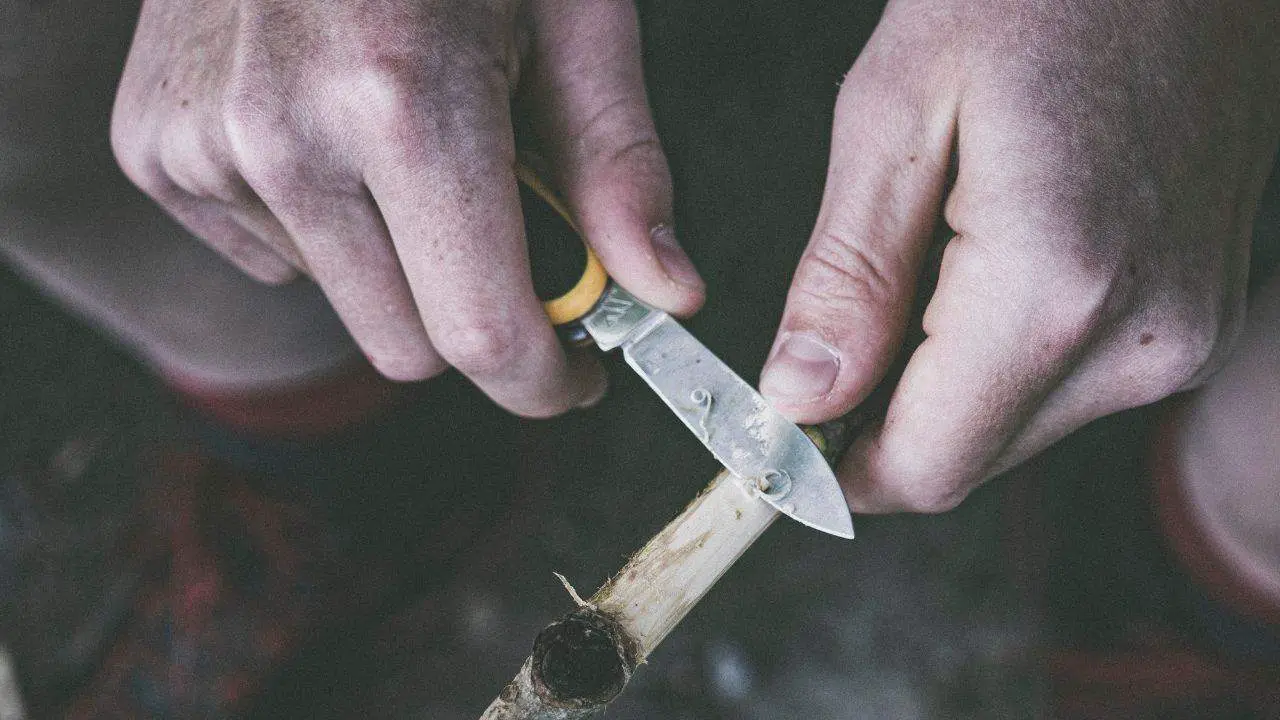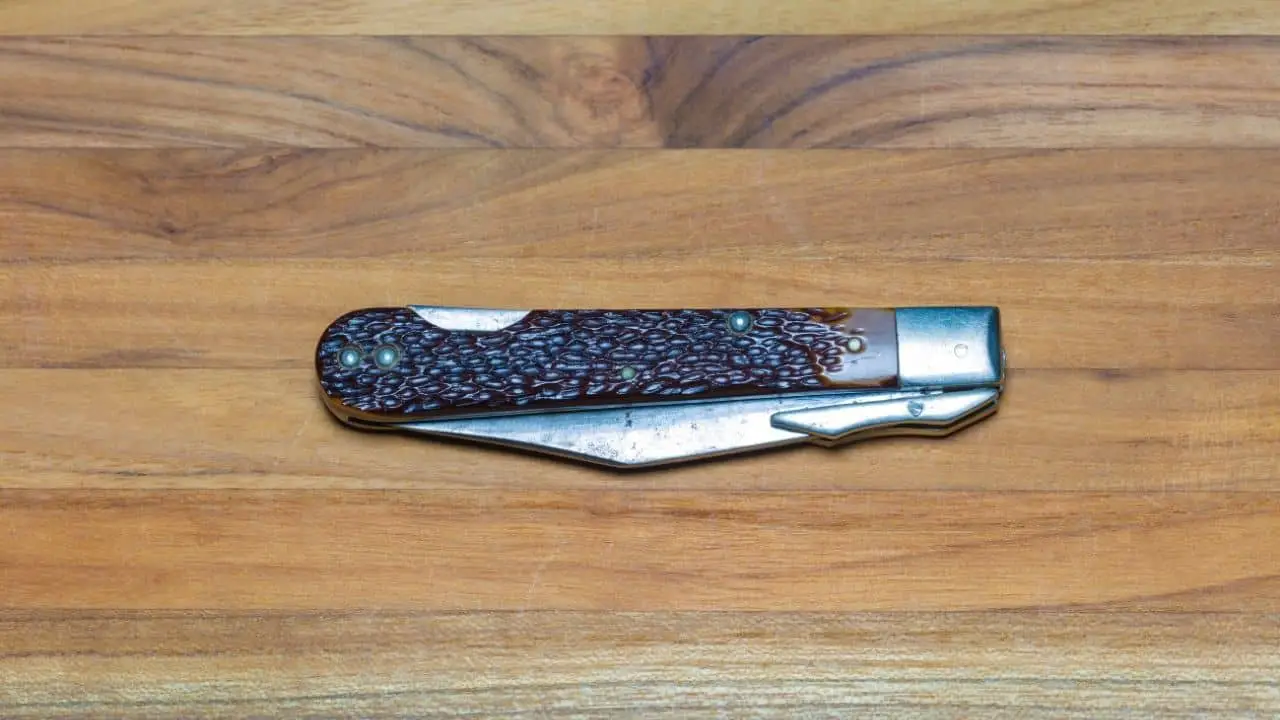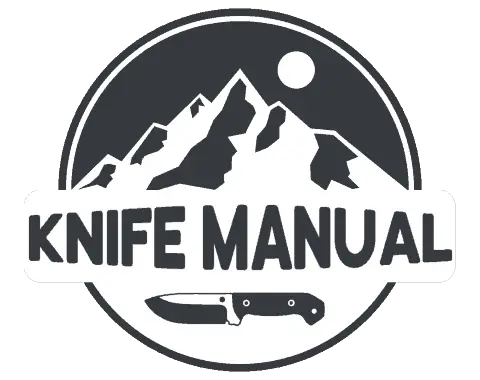When you purchase a new knife, you sort of expect it to be real, authentic, and produced by the brand displayed on it. However, there are a host of fake and counterfeit knives out on the market, and it can sometimes be difficult to tell the difference between a real and a fake knife. Case brand knives are especially susceptible to counterfeits because of their popularity and collector’s appeal.
One of the most telltale signs of a fake Case knife is sloppy or low-quality tang stamping. It is also essential to make sure the tang stamp is the right design for the knife model and in the correct location. Inferior materials and signs of poor craftsmanship can also indicate a fake Case knife.
Identifying a counterfeit Case knife can be difficult, but there are certain traits and signs that you can look out for to help you pick out the fake knives from the real ones. There is no foolproof method for spotting fake Case knives, so it is essential to take your time and thoroughly examine your knife while looking for the clues and signs that I’ll go over later in this article.
Table of Contents
7 Best Tips for Identifying a Counterfeit Case Knife

One of the best pieces of advice that I can give to someone who is trying to determine if a Case knife is a counterfeit or not is to take your time to do your due diligence even before purchasing the blade if possible. It is better to catch a fake knife before buying it than get home and figure it out after it is too late.
Thoroughly check out and examine all Case knives, or any knife for that matter, before going ahead and purchasing it. Anyway, let’s just jump right into it and go over seven of my best tips for identifying a fake or counterfeit Case knife!
1. Look for Poor Quality Tang Stamping
Nearly all genuine Case knives have a tang stamp. Since the beginning of the Case brand, they have always put some sort of stamp on the tang of the knives they produce. While the Case stamp design has changed over the years, Case has a reputation for having pretty clear and precise imprints on their knives, though they are not always perfect.
In recent years, Case has significantly stepped up their stamping procedure to ensure nearly all of their knives have a SUPER clear and pristine tang stamp. Even older Case knives tend to have pretty crispy and clear stamping, although there are plenty of exceptions due to the more flawed stamping techniques used at the time and cosmetic wear over the years.
While it is not always the best indicator of a fake knife because early Case stamps can be a little sloppy, a poor quality tang stamp should be something to look out for when trying to spot a counterfeit knife.
2. Make Sure the Knife Has the Appropriate Tang Stamp
In addition to the quality of the tang stamp on a Case knife, it is also important to make sure the knife you have has the correct stamp for that particular model. It may take a little additional research to find out what tang stamp your knife SHOULD have, but it is well worth the extra effort to ensure you have a genuine Case knife.
Case Knives has been putting a tang stamp on nearly all of their knives since their beginnings in 1889. Throughout the years, the design of the tang stamps used on Case knives has changed quite significantly. In fact, what tang stamp a Case knife has is a very accurate and useful indicator of when the blade was produced.
To help you figure out if your Case knife has the appropriate tang stamp, check out this list of all tang stamps used by Case and when they were in effect.
3. Look for Signs of Poor Workmanship on the Knife
Case Knives is known to make very high-quality knives that will last for a long time. If there are any signs on your knife of poor workmanship, it is definitely something to look into because it could indicate that it is a counterfeit.
Signs of poor workmanship can come in many forms on a knife, so make sure to scrutinize yours carefully. Most Case knife blades are stamped out of a larger metal sheet, so check for uneven edges because fake knives are usually not cut out as cleanly as the real deal. Crooked or uneven folding pins or an unevenly sharpened blade (if your knife is brand new) can also be signs of a fake knife.

However, keep in mind that all Case knives are not all perfect. There are definitely times where Case knives will be flawed or show signs of poor craftsmanship, but in general, authentic knives deliver better quality than fake knock-offs.
4. Compare It to Photos of Authentic Case Knives of the Same Model
Comparing your Case knife to a photo of a known authentic Case knife can be one of the best ways to make sure you don’t have a fake. You can find pictures of real Case knives on the official Case website and many other places online. If you suspect your knife to be fake, visiting a local knife shop or outdoors store can allow you to compare your knife in real life.
When you compare your knife to another Case knife, spend a few extra seconds to double-check that you are comparing apples to apples; by that, I mean make sure you are comparing your knife to the exact same knife model.
Look for subtle differences in texture, design, or size. People who make fake knives are generally pretty good at what they do, so you’ll have to try to spot small inconsistencies that they looked over or could not recreate.
5. If the Deal is Too Good to Be True, It Probably Is
I can not say it enough, but if the deal is too good to be true, it most likely is. Meaning, if someone is selling their Case knife WAY below market value, be skeptical. There are some genuinely lovely people out there, but if someone gives you an insanely good deal on a knife, the chances that it is a fake go up significantly.
Another trick regarding what type of deal you get on a knife is, people who knowingly sell fake Case knives often try to sell you on the story behind the knife and not the knife itself. Stories about how the knife was their grandfather’s, father’s, used in a war, or used by someone famous are usually entirely false.
Not all good deals on knives are bad, but when you come across one that is just TOO good to be true, be very skeptical and do your due diligence before taking up the offer.
6. Check the Reputation and History of the Seller
Another MAJOR thing to check is the history and reputation of the knife seller. Whether you suspect the Case knife you own is fake or you think a knife is fake before you purchase it, checking the reputation of a seller can be very helpful and informative.
If possible, the best place to get your Case knife is directly from their website, but if you decide to get one from another dealer, make sure to check their online reviews to assess their reputation. Sometimes, if you are buying a Case knife from an individual, it can be impossible to check their history or standing, so you’ll likely need to rely on the other tips I mention in this article to spot a fake Case knife.
It may take a few extra minutes, but it is well worth the hassle to verify a seller’s legitimacy before buying from them. If you already have purchased a suspected counterfeit knife, checking the seller’s reputation can also clue you in on whether it is actually fake or not.
7. Look for Signs that the Knife was Altered or Repaired
A common thing to find on Case knives, especially ones you buy second-hand or from an individual, is altered or replaced components. While there is nothing inherently wrong with altered or replaced parts on a knife, they often decrease the value of a knife, and the seller should tell you about them beforehand.
Altered Case knives can be a little tricky to distinguish from counterfeit knives because they both will often be slightly different from the original knife. I wouldn’t buy from someone who tries to sell me an altered knife without disclosing it because it could be a counterfeit knife, broken in some way, or a different model of Case knife disguised. Altered or repaired knives are usually not structurally sound and could be more prone to snapping, so it is best to steer clear of them altogether if possible.
Figuring out if a knife is a counterfeit can be quite tricky and time-consuming, so I hope these tips that I provided in this article have been helpful somehow.
Just remember to take your time and look for poor-quality tang stamping, the correct tang stamp design, signs of poor workmanship, and a good seller reputation. Comparing your knife to a known authentic Case knife can also help to verify its authenticity. And lastly, if possible, you should try to avoid getting altered or repaired Case knives just for the peace of mind that it can bring.
Check out some of the all-time best Case pocket knives below:
